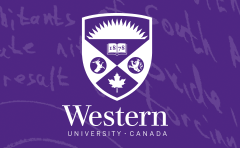Using manipulatives to demonstate abstract concepts
Session Type
Presentation
Room
Physics and Astronomy, room 117
Start Date
16-7-2025 3:00 PM
End Date
16-7-2025 3:30 PM
Keywords
Fisrt Year Calculus, Project, Volumes, Surfaces
Primary Threads
Teaching and Learning Science
Abstract
This presentation introduces a simple yet powerful hands-on activity that illuminates complex concepts in undergraduate mathematics through physical construction. Using only paper, scissors, and glue, students engaged in paper folding techniques to build three-dimensional models that were both mathematical and aesthetic. This tactile, accessible approach allowed students to interact with physical embodiments of abstract ideas—effectively experiencing the mathematics as it unfolded. As students transitioned from two-dimensional to three-dimensional thinking, subtle elements of calculus such as limits and Riemann sums emerged naturally, in ways that are often difficult to convey through traditional instruction. Final presentations revealed not only a deeper conceptual understanding but also a surprising level of creativity and independent inquiry, with many students exploring topics beyond the course curriculum. This approach significantly lowered barriers to mathematical engagement and provided a compelling proof of concept for teaching math in an experiential, interdisciplinary way—especially valuable for instructors delivering mathematics in nontraditional or cross-disciplinary contexts. These promising outcomes point toward a rich direction for future research on embodied learning in mathematics education.
Elements of Engagement
I will bring some examples of the solids generated by me or students who have kindly given me permission to share their work. Audience members can play with the objects and we will discuss some of the questions students engaged with during the presentation portion of this assessment. Time will be set aside for participants to brainstorm on how providing an embodiment of abstract concepts may work in their own courses.
Using manipulatives to demonstate abstract concepts
Physics and Astronomy, room 117
This presentation introduces a simple yet powerful hands-on activity that illuminates complex concepts in undergraduate mathematics through physical construction. Using only paper, scissors, and glue, students engaged in paper folding techniques to build three-dimensional models that were both mathematical and aesthetic. This tactile, accessible approach allowed students to interact with physical embodiments of abstract ideas—effectively experiencing the mathematics as it unfolded. As students transitioned from two-dimensional to three-dimensional thinking, subtle elements of calculus such as limits and Riemann sums emerged naturally, in ways that are often difficult to convey through traditional instruction. Final presentations revealed not only a deeper conceptual understanding but also a surprising level of creativity and independent inquiry, with many students exploring topics beyond the course curriculum. This approach significantly lowered barriers to mathematical engagement and provided a compelling proof of concept for teaching math in an experiential, interdisciplinary way—especially valuable for instructors delivering mathematics in nontraditional or cross-disciplinary contexts. These promising outcomes point toward a rich direction for future research on embodied learning in mathematics education.
